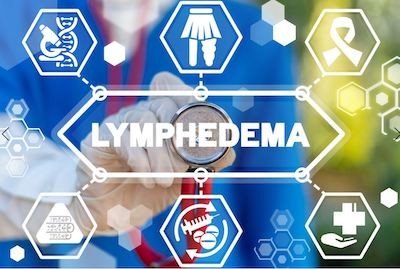Lymphedema Awareness Month
March 12, 2021

To help spread awareness for Lymphedema Awareness Month, Sharon Arnold, PT, CLT, a certified lymphedema specialist at Haywood Regional Medical Center shares a bit about the condition lymphedema.
March is Lymphedema Awareness Month. To Honor and promote lymphedema awareness, first we should understand what the lymphatic system does.
The function of the lymphatic system is:
- To protect the body against infection and disease
- To drain excess fluid from the body’s tissue spaces
Most people have heard of the circulatory system that includes the heart, veins, and arteries. The lymphatic system is a series of one-way vessels that carry water, proteins, fat and cells from the tissue spaces and meet up with the veins in the neck. Lymph nodes clean out bacteria along the way.
Lymphedema is a protein rich swelling that builds up between your cells, usually in an arm or leg, due to the lymphatic system not working properly. Some people are born with a lymphatic system that isn’t developed properly and they develop lymphedema as a result. This is known as primary lymphedema.
Secondary lymphedema occurs when other health issues or surgeries damage the lymphatics, leading to lymphedema. The most common cause of lymphedema in the United States is breast cancer related surgery in which lymph nodes are removed. However, lymphedema can develop after a surgery even if lymph nodes are not removed, or due to veins that aren’t working properly. There are other cases in which lymphedema can occur as well.
The lymphatic system works alongside our vein system to help return water, fat, cells, and proteins back to our circulation. When the system can’t keep up or is blocked due to damage from surgery or other causes, fluid backs up. Proteins stuck waiting between the tissues draw more fluid out of the cells, causing the condition to persist or worsen.
There is no cure for lymphedema, but there is treatment to manage this condition conservatively. This type of treatment is called Complete Decongestive Therapy and involves four parts. These parts include skin care education, therapeutic exercise, manual lymphatic drainage, and compression bandaging. Ultimately, a person with lymphedema will need to wear a compression garment (stockings or sleeve for example) to maintain loss of swelling long term.
Haywood Regional Medical Center has a lymphedema program within the Rehabilitation Services (Physical Therapy) Department at the Fitness Center location. If you think you may have lymphedema, contact your physician, and obtain an order for physical therapy/lymphedema clinic. If you need a physician, call 800.424.DOCS (3627) to be connected with one near you.
